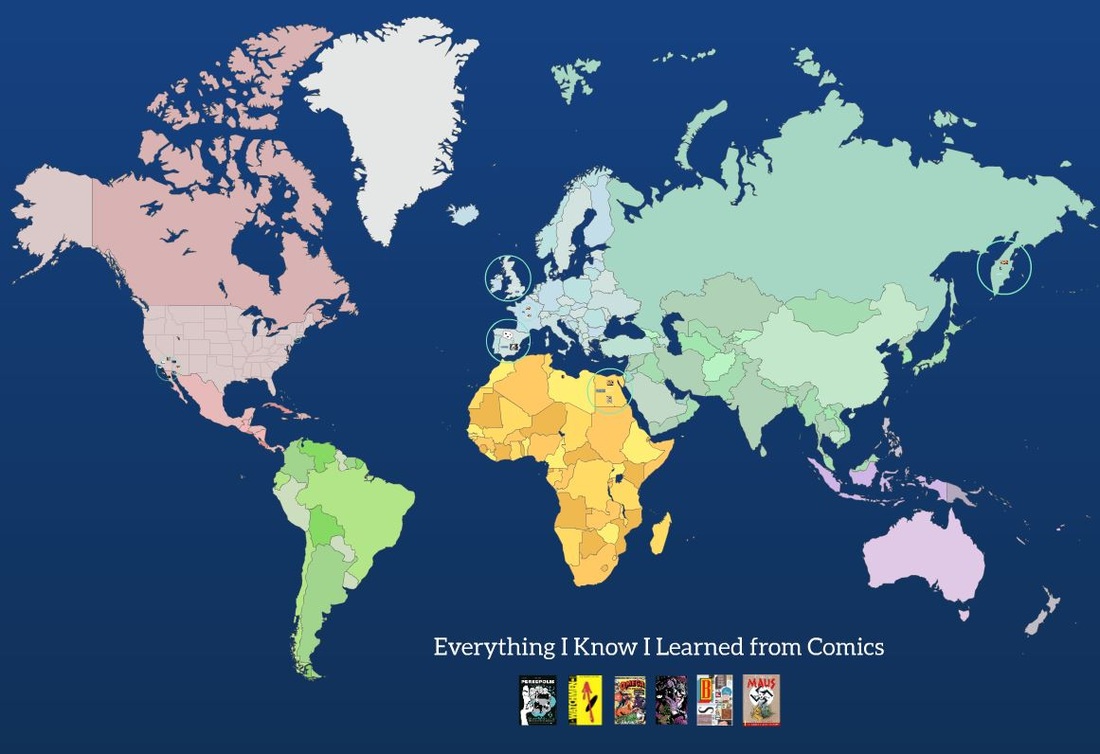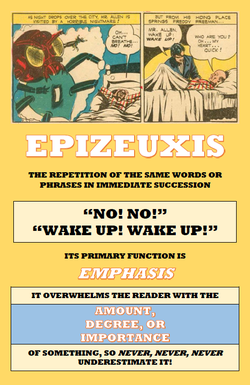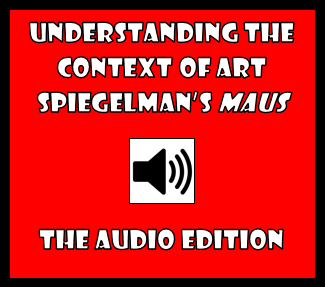|
by Glen Downey, Comics in Education, www.comicsineducation.com Everything I know I learned from comics, so I owe it to comics to learn about its history! At the 2014 Reading for the Love of It Conference in Toronto, my first session was entitled "Everything I Know I Learned from Comics." If that's the case--and really, it is--I think I owed it to comics to try and figure out where the tradition of visual narrative actually comes from. Of course, for this, one needs to be armed with Scott McCloud's Understanding Comics, a work whose importance to the genre cannot be underestimated. So, the next time anyone casts aspersions at your idea of introducing visual narrative into the classroom because it's somehow a "lesser" genre than poetry, the novel, or short fiction, tell them that it actually has a tradition extending much further back than the written or even the spoken word. Better yet, just show them this... Historical Tradition When we think about comics and graphic novels, we should think about them in the broader context of visual narrative. Visual narrative is telling a story in whole or in part using visual images, like illustrations or photographs. If we think about comics and graphic novels in this way, we can more easily recognize them as the product of a tradition that extends much further back than the tradition of writing. Cave of Altamira, 20000-35000 BCE The Cave of Altamira in Spain is known as the Sistine Chapel of Cave Art. Its depictions present a breathtaking visual narrative of the reality of life in Ancient Spain. The dynamic movement and energy of the illustrations tell us not only how ancient man perceived the natural world and its creatures, but how he felt about them. Taken together, these illustrations form a visual narrative that tells us an important story of early man, and serves as one of the most important examples of our species' ability to tell its stories with visual imagery. Tutankhamun's Tomb, c. 1323 BCE We owe a great deal to the discovery of the Rosetta Stone. This ancient artifact containing a combination of three different language systems, gave rise to the field of Egyptology. When we look at ancient hieroglyphics, like those found in the Tomb of Tutankhamun, we see a fascinating early example of visual narrative. Told through visual imagery that contains representations of human beings, animals, and symbols, ancient hieroglyphics are sequential art of the highest order. The Bayeux Tapestry, c. 1077 The Battle of Hastings and what it decided changed the course of European history. William the Conqueror and his Norman army crossed the Channel and won a decisive victory over the English, killing their King, Harold, when an arrow struck him in the eye. Perhaps even more remarkable than the Battle of Hastings, though, is how it was commemorated in the town of Bayeux. Woven into what has come down to us as a 70m long fabric is the Bayeux Tapestry, perhaps the most visually stunning graphic story in the world. A combination of image and text, it tells the story of the Norman conquest beginning before the Battle of Hastings and extending through to William's coronation. Stations of the Cross, c. 1600 CE Many of us are confronted with a rather profound work of visual storytelling whenever we step foot within a church. The work in question is a common installation called "The Stations of the Cross," which generally came to be recognized as such in the fifteenth century. These stations tell the story of the execution of Jesus of Nazareth and are often arranged around a church as either inscription-bearing sculptures or plaques, or, in some instances, stained-glass windows. Each station bears a title, such as "Jesus falls the first time," or "Jesus is stripped of his garments." As has been noted of William Hogarth's "A Rake's Progress," the stations effectively form a storyboard or visual narrative of an important sequence of events in a person's life. "A Rake's Progress," 1732-33 CE "A Rake's Progress" is a series of eight paintings completed by William Hogarth in 1732-33 which were then produced as engravings for printing in 1735. They tell the story of Tom Rakewell, a wasteful "rake" who inherits a small fortune, wastes it through frivolous living, ends up in Fleet Prison, and then Bedlam hospital. Because "A Rake's Progress" effectively tells the story of a character's rise and fall in visual form, it has been thought of as an early example of a graphic story (Scott McCloud) and even a storyboard (Alan Parker).
0 Comments
Your comment will be posted after it is approved.
Leave a Reply. |
Glen DowneyDr. Glen Downey is an award-winning children's author, educator, and academic from Oakville, Ontario. He works as a children's writer for Rubicon Publishing, a reviewer for PW Comics World, an editor for the Sequart Organization, and serves as the Chair of English and Drama at The York School in Toronto. If you've found this site useful and would like to donate to Comics in Education, we'd really appreciate the support!
Archives
February 2019
|




 RSS Feed
RSS Feed
